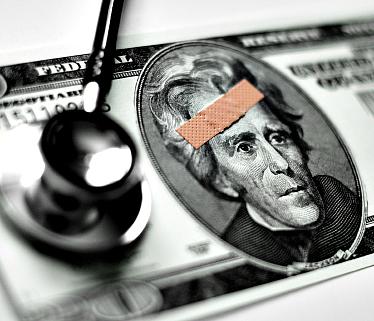How I Did the Story: Doctor Shortage Areas (HPSAs) and Medicare Bonuses

Several reporters have asked me about my story about how a lack of oversight of Health Professional Shortage Areas or HPSAs has resulted in overpayments to primary care physicians by Medicare.
While working on another story, a fraud investigator began talking to me about the "Medicare bonuses to doctors." What bonus system?
He explained that primary care docs (and I would later learn, psychiatrists) who agree to locate and work in HPSAs get a 10 percent bonus from Medicare for every claim they file. The bonuses are paid only to doctors.
A little Internet digging found that there are three flavors of HPSAs. There's a HPSA based on a lack of primary care physicians, one based on a lack of mental health services and one based on a lack of dental services. HPSAs are determined based on health, poverty, population data culled by state health departments.
In Texas, that's the Texas Department of State Health Services, or as we call it, Dishes (DSHS).
The state data is sent to Washington, to the Health Resources and Services Administration, the agency in charge of approving which counties, neighborhoods or census tracts should be designated a HPSA.
The shortage areas (HPSAs), a system that dates back to 1978, play a key role in luring primary care docs and psychiatrists to rural or poorer areas in the United States that have little regular access to health care.
In addition to the bonuses, there are other incentives to get primary care doctors to consider working in a HPSAs.
Physicians can qualify for medical school loan forgiveness if they relocate to a HPSA. If they're a foreign doctor, the J-1 visa requirement that they return home, is waived.
But the 10 percent bonsus system is quite a perk. After talking to HRSA, I discovered that there's been a near 10-year lag in updating the HPSAs which means that if any HPSA had improved its medical care in that time, their primary care doctors were getting bonuses they no longer qualified for.
HRSA would not say why this lag had happened. But after talking to some insiders and digging a little more, I found out why. Seems HPSAs are their own political force. Some seem to hang on to their status as long as possible. In fact, there are some states that are aggressive in getting their entire state declared a HPSA (and I'm looking into that). And two attempts to come up with a more modern way to craft HPSAs have resulted in no changes yet.
The investigator mentioned that HSPAs and their lack of updating has been noted as a problem. He pointed me to two documents. The first, available online is here. I've also have it Scribd-ed it to my docs page on my tumblr (tlangford.tumblr.com). It's a 2005 HHS OIG report on rural clinics and explains, there on pages 2-3, in the introduction, how HPSAs work.
"HRSA designates shortage areas for the purpose of directing placement of providers or program funding for nearly 30 departmental programs focused on alleviating access problems in such locations."
But the HPSA oversight problems are pointed on in the report comes up on page 8: "Sixty-one percent (169) of these RHCs are located in areas that HRSA has not designated as shortage areas. The remaining 39 percent (110) are located in urbanized areas defined by Census."
Then there's this Sept. 26, 2011 HHS OIG memo - (not available online and there really is no good reason for that) to the HHS deputy secretary. It essentially points out that, this lack of updating what areas are medically needy, is costing money via Medicare bonuses.
By the HHS OIG's own accounting an estimated $64 million has been overpaid to primary care docs in Hidalgo County, which no longer qualifies. Two months later after this memo, Hidalgo and 310 other areas were stripped of their HPSA status.
However, Hidalgo is still a HPSA based on a lack of mental health services.
I encourage everyone to start looking more closely at their own HPSAs.

